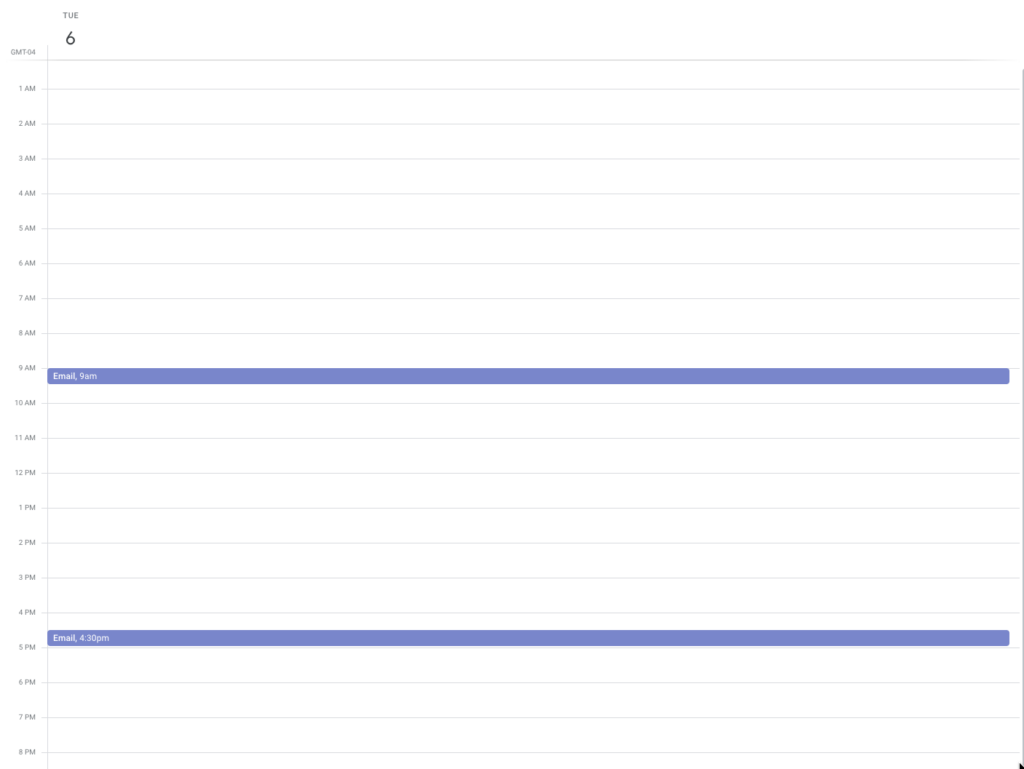What is time boxing?
Time boxing is a productivity technique where you set a fixed and often maximum amount of time (a “box”) for a task or activity. Once the time box is over, you stop working on that task, doesn’t matter if the task is complete or not, you move on.
Time boxing helps maintain strict time limits, preventing tasks from extending indefinitely, which helps improve focus and efficiency.
Where did time boxing come from?
Time boxing is a pretty modern concept. Its roots are from the industrial revolution and software development.
When working in a factory setting, it makes sense that managers or owners of the factories would look to optimize the output of certain processes. If you can get more output in the same about of time, that will usually equal more money… who doesn’t want that?
In software development, agile development methodologies promote limiting the amount of time spent on certain software bugs or features. Sprints, a common feature of agile development, are pretty much large time boxes. Finish the feature or not, you are moving on.
The thinking behind working in sprints (time boxes) is that you can either allow a problem to take 6 months to solve or you can try solving it in 6 days. Obviously, difficult problems take more time, but in most contexts, restricting the amount of time spent on a task will result in coming to a solution quicker.
Is there a time box law?
There is a time boxing law, actually…
The law is referred to as Parkinson’s Law, which states:
Work expands to fill the available time.
It is a pretty fascinating law, which should help us understand just how important managing our time properly is.
When should I time box?
That’s a very personal question.
A good place to start is by finding tasks that are not essential to your main focus. An area I have found great success using time boxing is email management.
I used to sit at my computer with my email open at all times. I pride myself at living at inbox-zero. The second an email would come in, I would answer it. Was I responsive? Yes. Was I effective? Kind of. Sure, I was very responsive to emails, but what that helping me accomplish my goals? Not really.
I created a time box for emails. When getting started I allowed myself to open my inbox for 5 minutes per hour. This was a huge change for me. What I noticed is that I was still just as responsive. My worse case for response time went from minutes to 55 minutes.
As I got comfortable with the practice and noticed that my performance and perceived responsiveness were not changing, I settled on opening email twice per work day. Once in the morning and once in the afternoon. These are the only two times in the day I check my email.
This practice alone has probably 10x my productivity. I am no longer constantly context switching, which is a huge productivity drag. Almost as importantly, I am in control of my time, as opposed to a random stranger who happened to send an email with a great subject line.
Please note, this example is based on my experience and current workload. If your job requires instant email responses, this time box is not for you, but I promise you there are others you will benefit from.
How to start time boxing
First things first, start thinking about your main goals and objectives. Go high level. For example, what do you want to accomplish daily.
If you are not tracking how you spend your time at all, start by coming up with a few tasks you are constantly doing each day.
Email, was not core to my daily goals, but it was also something that I did not want to abandon completely.
So, I created a time box for email, two actually.
One in the morning and another in the afternoon.
I enter both boxes into my calendar. Here is what my calendar now looks like:

I have a half hour time box for email from 9:00 to 9:30 in the morning and from 4:30 to 5:00 in the evening. The most important thing is that I do not open email at any other time of the day.
Here is what will happen right away. You just went from spending an unknown amount of time every day on your email, to knowing your are spending an hour on your email. Moving forward you can start making decisions based on data instead of guessing.
Take Time Boxing to the next level
If you want to start tracking your time boxes and how effective they are, you should consider signing up for time audit.
In addition to using time boxes, you can start rating the effectiveness of your time boxes. If a time box you have set up for yourself is always rating poorly, it might be time to change the time box if you can.